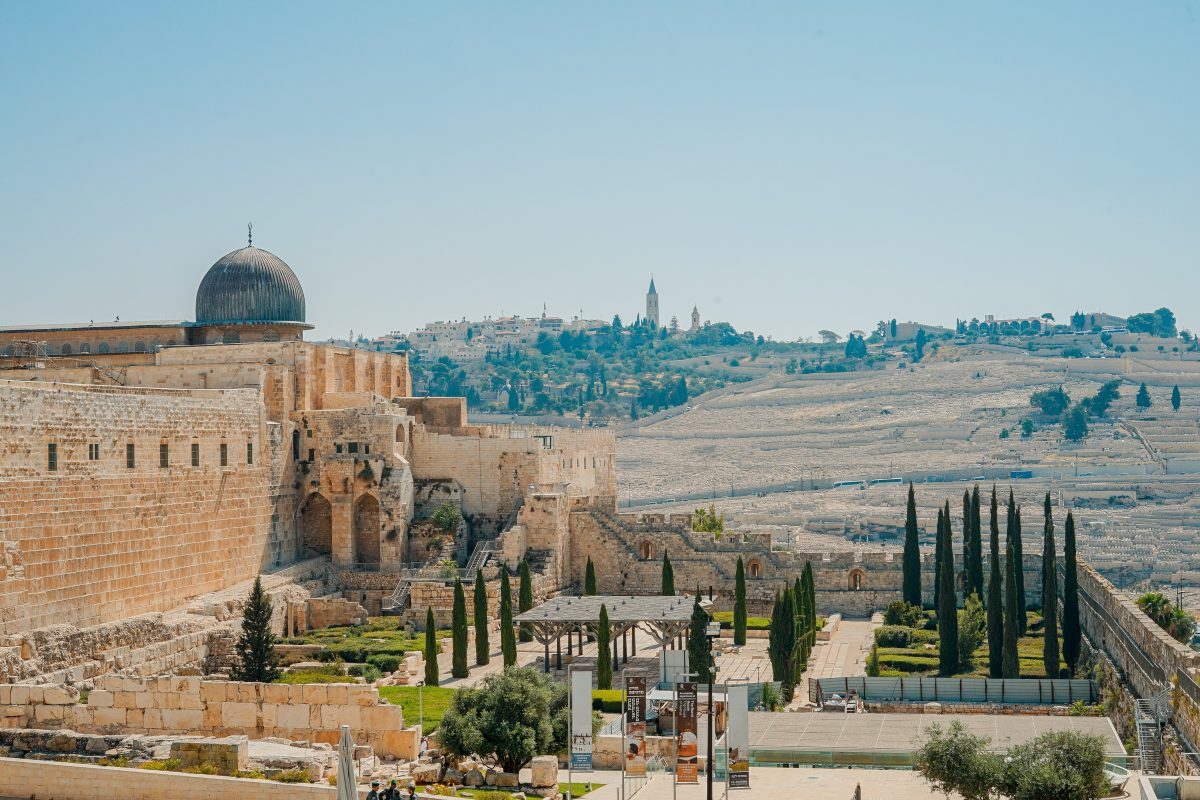Graz, the second largest city in Austria, is brimming with cultural heritage and boasts a rich history that spans over centuries. It is home to a diverse range of museums that offer visitors an opportunity to explore and learn more about the city’s art, history, and culture. If you’re planning a trip to Graz and interested in visiting some of the best museums the city has to offer, then you’re in the right place. In this post, we’ll take you on a virtual tour of Graz’s finest museums, highlighting all the must-visit spots that you won’t want to miss. So, buckle up and get ready for a journey through Graz’s art and culture scene!
The 2 Best Museums in Graz
The 2 Best Museums in Graz
1. Landeszeughaus Styrian Armoury Entrance Ticket

Ensure you don’t miss out on the world’s largest collection of historic armory by booking your entrance ticket to the Styrian Armoury Museum in Graz in advance. With your ticket, you will have guaranteed admission to browse the 32,000-piece collection of armor, weapons, and tools dating back to the 17th century. Consider purchasing an audio guide or guided tour at a €2.50 supplement to enhance your understanding of the exhibits. Please note that if you are visiting between November 1st and March 23rd, a guided tour is compulsory. Hear heroic sagas from Styrian history as you explore the museum alone or with a guide. Local taxes are included with your ticket. Make your way to the Styrian Armoury Museum located in Graz’s historical center and present your voucher to the cashier to begin your tour.
2. Kunsthaus Museum Entrance Ticket

Discover Austria’s vibrant art scene in Graz by taking a self-guided tour of the Kunsthaus Graz Museum. With your entrance ticket included, you can skip the long visitor lines and explore the museum at your own pace. As an ideal choice for art fans, you can enjoy multiple contemporary art exhibitions in this Graz institution. See a diverse selection of contemporary art from Austria and further afield. All fees and taxes are included in your ticket price. Guided tours or audio guides are available for an extra fee if you choose to purchase them. The museum is open from Tuesday to Sunday from 10:00 AM to 06:00 PM. In order to receive your ticket, please show your printed booking confirmation from the booking company at the cashier point. Confirmation will be received at the time of booking.
The Most Frequently Asked Questions About Graz
Graz is one of Austria’s hidden gems featuring a stunning Old Town and picturesque streets. As Graz continues to emerge as a hotspot destination, many people have questions about the city. In this blog post, we’ll answer some of the most frequently asked questions about Graz.1. What should I see in Graz?
Graz has plenty of landmarks and venues that are worth a visit. The must-see attractions include:- The Clock Tower – This impressive 28-meter high tower is located at the Schlossberg hill and features a clock face from the 16th century.
- The Kunsthaus – A modern art museum with an eye-catching design called the “friendly alien.”
- Eggenberg Palace – A magnificent palace featuring a rich culture and history of Styria.
- Schloss Eggenberg Palace and Gardens – a UNESCO World Heritage Site.
- The Old Town – Grazer Altstadt, with its beautiful medieval architecture and cobblestone alleys that date back to the 14th century.
- The Styrian Armoury – The largest historical armory in the world, it houses approximately 32,000 arms, armor and war documents.
- The Murinsel – An artificial island located in the middle of the Mur River that attracts numerous tourists annually.
2. How long should I stay in Graz?
The length of your stay depends on your interests and how much you want to explore Graz. A minimum of two days is necessary to tour the major landmarks and visit the museums. A more extended stay of four to five days is ideal if you are looking to immerse in the city’s culture and enjoy the scenic surroundings.3. What’s the best time of year to visit Graz?
Graz is a year-round destination that boasts different experiences during different seasons, depending on your preference. From mid-March to May, and September to October, the weather is mild and there are fewer tourists around. This is ideal for sightseeing or hiking. During the summer months of June to August, Graz comes alive with festivals, concerts and outdoor activities, perfect for those looking for a lively city experience. From November to February, the city is less crowded and visitors can enjoy the Christmas markets and winter sports in Styria.4. How do I get around Graz?
Graz has an excellent public transport system, which includes tram, bus and train networks, making it effortless to get around the city. Alternatively, you can rent a bike, as the city is bike-friendly with over 1300 km of cycling paths. It’s also possible to explore the city on foot since most attractions are within walking distance of one another.5. What is the local cuisine of Graz?
Graz has a rich culinary culture with a wide variety of traditional dishes that are unique to the Styrian region. Some of the local specialties include:- Schilcher wine – a rosé wine made from Blue Wildbachers grapes.
- Kürbiskernöl – pumpkin seed oil that adds a nutty flavor to dishes.
- Tafelspitz – boiled beef with horseradish and apple sauce.
- Steirischer Backhendlsalat – a salad made with crispy fried chicken, bacon and pumpkin seed oil on mixed salad.
6. What are some popular festivals in Graz?
Graz has a range of exciting festivals throughout the year including:- Fantastic Gondolas – Held every January, this festival features gondolas transformed into works of art floating along the Mur River.
- Spring Festival – A street fair held annually in April with live music, traditional food, and hand-crafted souvenirs.
- Styrian Autumn – One of the largest and most popular festivals in Graz that showcases local wines, culinary specialties, and musical performances.
- Long Night of Museums – Held every October, this event allows visitors to see the major museums in Graz for a significantly reduced rate.
- Christmas Markets – held in November and December, the markets are bustling with vendors selling handcrafted gifts, mulled wine, and other traditional treats.
7. Where can I find accommodation in Graz?
Graz has plenty of accommodation options to fit every budget, from hostels and Airbnb’s to luxury hotels. Located in the heart of the city, the reputable Schlossberg Hotel is an excellent choice for luxury accommodation with breathtaking views, while the Hotel Daniel Graz provides cozy rooms and a unique camping experience in the city center.Conclusion
Graz is a beautiful city that has so much to offer, from its rich culture and history to its tasty local cuisine, festivals, and stunning landmarks. Whether you are a history buff or a foodie, Graz is a perfect destination that is bound to capture your heart. By exploring the city with the tips highlighted in this blog post, you can fully immerse yourself in this charming city named the “UNESCO City of Design”.If you’re planning a trip to Austria, Graz is a city that should definitely be on your list. Not only is it a UNESCO World Heritage Site with stunning architecture and picturesque streets, but it’s also home to some of the best museums in the country. Whether you’re an art lover, history buff, or just looking for a unique experience, Graz has a museum for you. In this post, we’ll take a look at the best museum visits in Graz and what makes each one special. So grab your walking shoes and let’s explore the fascinating world of museums in Graz.
The 2 Best Museums in Graz
The 2 Best Museums in Graz
1. Kunsthaus Museum Entrance Ticket

Explore Austria’s dynamic art scene on your own schedule with the Kunsthaus Graz Museum entrance ticket. Bypass lengthy lines and enjoy the freedom of taking your time strolling through the museum’s several cutting-edge art exhibitions. You can expect a vast assortment of contemporary art from Austria and other countries. This tour is ideal for art enthusiasts who want to experience Graz’s culture. Entrance fees, taxes, and confirmation of booking are all included. Guided tours or audio guides are possible for an additional fee of 250 EUR per person. The meeting point is at the Kunsthaus Graz Museum, and opening hours are from 10:00 AM to 06:00 PM, Tuesday through Sunday from January 1, 2023, to March 26, 2024. Please present your printed booking confirmation from your vendor at the museum’s cash register to receive your ticket.
2. Landeszeughaus Styrian Armoury Entrance Ticket

Ensure you don’t miss out on one of Graz’s most-visited institutions by booking your entrance ticket to the Styrian Armoury Museum in advance. The museum boasts the world’s largest collection of historic armory, with over 32,000 armor, weapons, and tools on display dating back to the 17th century. Join a guided tour or opt for an audio guide for an enhanced understanding of the exhibits. If you’re visiting between November 1st and March 23rd, a guided tour is mandatory. On arrival, present your voucher to the cashier and you will be guaranteed admission to the museum. Local taxes are also included in the price of the ticket. Experience heroic sagas from Styrian while browsing through the impressive collection of weaponry and suits of armor. Don’t miss out on this unique opportunity to explore the Styrian Armoury Museum, book your ticket now.
FAQs About Graz, Austria
Graz is a beautiful city located in southeastern Austria. It is the second-largest city in the country and the capital of the Styria region. Graz is a popular tourist destination, and visitors often have some questions before they arrive. Here are the most frequently asked questions about Graz:1. What is the best time to visit Graz?
The best time to visit Graz is from May to September. During this time, the weather is pleasant, and many outdoor activities and festivals take place. The summer months are also the busiest, and many hotels and restaurants may have higher prices. If you prefer a quieter experience, the shoulder seasons of April and October are excellent options with fewer crowds and lower prices.2. How do I get to Graz?
Graz has its airport, Graz Airport (GRZ), but flight options may be limited. The most convenient way to reach Graz is by train or bus. Major train stations in Austria offer connections to Graz. With the train, you’ll arrive at Graz Main Station, centrally located in the city. Buses and cars are also an option to get into Graz, with most people renting a car to drive in from nearby cities or countries.3. What are some things to do in Graz?
Graz has plenty of sights and activities to keep you busy. One of the top attractions is the Schlossberg, a hill that offers impressive views of the city. You can hike up or take the Schlossbergbahn funicular to the top. Other attractions include the Kunsthaus Graz Museum, the Old Town, the Styrian Armoury Museum, and Eggenberg Palace. Graz is also known for its cuisine, including pumpkin seed oil and Styrian wine, so make sure to try some of the local dishes.4. What is the currency used in Graz?
Austria uses the euro, like many other countries in the EU. It is recommended to exchange currency beforehand or withdraw it from an ATM with low transaction fees. Most shops and restaurants in Graz accept credit cards, but it is always wise to carry some cash for smaller transactions.5. Is Graz a safe city?
Graz is a relatively safe city, with low crime rates compared to other European cities. However, visitors should take the same precautions as they would in any other city, such as watching their belongings in crowded tourist areas, avoiding dimly-lit streets at night, and staying aware of their surroundings. The city has an excellent public transport system, which makes getting around more convenient and safe.6. What language do people speak in Graz?
The official language in Austria is German. While many people in Graz speak English, it is always helpful to have a basic understanding of German phrases to help you communicate with locals. The city hosts international students and researchers, so you may also hear other languages such as English and Italian.7. What is the time zone in Graz?
Graz is in the Central European Timezone (CET). During daylight savings time, the city operates on Central European Summer Time (CEST), which is one hour ahead of CET.8. What is the tipping culture in Graz?
It is common to tip in Graz, most commonly 5-10% in restaurants and cafes, depending on the service. Tipping is also prevalent in other service industries such as hairdressers and taxi drivers. While not mandatory, it is appreciated to tip to show appreciation for good service.9. What kind of weather can I expect in Graz?
Graz experiences a temperate continental climate, with mild to moderately hot summers and cold, snowy winters. Summer temperatures typically range from 20-30°C, while winter temperatures average around -5°C. It is always recommended to check the weather forecast before traveling to Graz to decide on what type of clothing is suitable.10. Can I use public transport to get around Graz?
Yes, Graz has an extensive public transport network that includes trams, buses, and trains. You can buy tickets at vending machines or newsagents, and the same ticket can be used for all modes of transport. Graz is also an incredibly walkable city and has bike-sharing services for those who want a more active form of transportation.Final thoughts
Graz is an excellent destination to visit, with something for everyone. Whether you’re interested in history, culture, or food, Graz has it all. Remember to check the weather forecast before traveling and have a basic understanding of German phrases to help communicate with locals. With this guide to frequently asked questions, you will have a better understanding of what to expect when visiting Graz.Graz, the second largest city in Austria, boasts of an impressive range of museums and galleries that cater to all kinds of interests. With a long and rich history, the city has preserved and showcased the best of art, culture, and science through its museums – from contemporary art to ancient history, from natural sciences to musical instruments. If you’re planning a trip to Graz and love visiting museums, you’re in for a treat. In this post, we’ll take you through some of the best museum visits in Graz that are a must-visit for art and culture enthusiasts, families, and solo travelers alike. So, grab your museum map and let’s get started!
The 2 Best Museums in Graz
The 2 Best Museums in Graz
1. Kunsthaus Museum Entrance Ticket

Discover Austria’s vibrant art scene in Graz with an entrance ticket to Kunsthaus Graz Museum. Skip the long visitor lines and explore the museum at your own pace, stopping to admire the diverse selection of contemporary art from Austria and around the world. This flexible self-guided tour is an ideal choice for art fans. All fees and taxes are included in the ticket price, but guided tours or audio guides are available for an additional cost. The museum is open from Tuesday to Sunday, 10:00 AM to 06:00 PM. To receive your ticket, please show your printed booking confirmation at the cashier point. Confirmation will be received at the time of booking.
2. Landeszeughaus Styrian Armoury Entrance Ticket

Ensure you don’t miss out on one of Graz’s most-visited institutions by booking your entrance ticket to the Styrian Armoury Museum in advance. This museum boasts the world’s largest historic armory, with a vast collection of 32,000 pieces of weaponry, tools, and suits of armor on display. You can opt to enhance your understanding of the exhibits by joining a guided tour, available for a €2.50 supplement which includes an audio guide. The museum, located in Graz’s historical center, is open all year, but between November 1st and March 23rd, a guided tour is compulsory. Whether you choose to explore the museum on your own or with a guide, you’ll be able to appreciate the vast history of armory dating back to the 17th century and hear stories of heroic sagas from Styrian. Your entrance ticket includes local taxes, and after presenting your voucher to the cashier, you’re free to immerse yourself in the historic collection at your leisure.
The Most Frequently Asked Questions About Graz
Graz is the second-largest city in Austria and is known for its beautiful architecture, rich history, and excellent culinary scene. Whether you’re planning to visit or move to Graz, you may have some questions about what to expect. In this post, we’ll answer some of the most frequently asked questions about Graz.1. What is Graz famous for?
Graz is famous for its well-preserved old town, which was named a UNESCO World Heritage Site in 1999. The city is home to many beautiful buildings, museums, and historical landmarks. Graz is also known for its culinary scene, with many excellent restaurants and cafés serving traditional Austrian cuisine and international dishes.2. How do I get to Graz?
Graz has an international airport with flights to several major European cities, including Frankfurt, Munich, and Vienna. You can also take a train to Graz from other parts of Austria or neighboring countries. There are also several bus companies offering transportation to Graz.3. What is the best time to visit Graz?
The best time to visit Graz is during the spring and summer months, from April to September. During this time, the weather is mild, and there are many outdoor events and festivals to enjoy. Winter can also be a magical time to visit Graz, with Christmas markets and snow-covered streets.4. What are the top tourist attractions in Graz?
Some of the top tourist attractions in Graz include:- The Schlossberg, a hill in the center of the city with a clock tower and panoramic views of Graz
- The Kunsthaus Graz, a modern art museum with an iconic blue bubble-shaped structure
- The Graz Cathedral, a beautiful baroque church with stunning frescoes and decorations
- The Eggenberg Palace, a grand 17th-century palace with beautiful gardens and art collections
5. What is the cost of living in Graz?
The cost of living in Graz is relatively affordable compared to other cities in Austria and Europe. However, prices can vary depending on your lifestyle and preferences. On average, a one-bedroom apartment in the city center will cost around 700-800 Euros per month. A meal at an average restaurant will cost around 10-15 Euros, and a pint of beer is around 4 Euros.6. What is the nightlife like in Graz?
Graz has a lively nightlife scene, with many bars and clubs catering to different tastes and styles. The city center is home to several traditional Austrian taverns, known as “Gasthäuser,” as well as trendy bars and clubs playing the latest music.7. Is Graz a safe city?
Graz is generally considered a safe city with a low crime rate. However, as with any city, it’s essential to take basic precautions and be aware of your surroundings, especially when traveling alone at night.8. What is the public transportation like in Graz?
Graz has an efficient and affordable public transportation system consisting of trams, buses, and a funicular that takes you up to the Schlossberg. You can purchase a single ticket for a couple of Euros, or buy a multi-day pass. The city center is also compact enough to explore on foot or by bike.9. What are some traditional dishes to try in Graz?
If you’re visiting Graz, you must try some of the traditional Austrian dishes. Some of the most famous include:- Schnitzel, a breaded and fried cutlet of meat, usually pork or veal
- Tafelspitz, boiled beef served with potatoes and horseradish sauce
- Kaiserschmarrn, a shredded pancake served with fruit compote
- Strudel, a pastry filled with sweet or savory ingredients, such as apple, cheese, or spinach.
10. Can I speak English in Graz?
Most people in Graz speak English fluently, especially those who work in the tourism industry. However, it’s always helpful to learn some basic German phrases to communicate with locals and show respect for their culture.If you’re looking for a city that has a rich cultural scene, Graz is certainly one of the best places to visit. The city is home to several museums that house a collection of impressive artworks, artifacts, and exhibitions that offer a glimpse into Austria’s history and culture. Whether you’re a fan of contemporary art, history, or science, Graz has some of the best museums in Austria that cater to all interests. In this blog post, we will guide you through the best museum visits in Graz to help you plan your itinerary for a cultural trip to this beautiful city.
The 2 Best Museums in Graz
The 2 Best Museums in Graz
1. Kunsthaus Museum Entrance Ticket

Discover Austria’s vibrant art scene in Graz with this entrance ticket to Kunsthaus Graz Museum. As an ideal choice for art fans, this flexible self-guided tour allows you to explore the museum at your own leisurely pace. You’ll skip long visitor lines and enjoy multiple contemporary art exhibitions in this renowned Graz institution. See a diverse selection of contemporary art from Austria and further afield, and have all fees and taxes included. Guided tour or audio guides are available for an additional fee if desired. The museum is open Tuesday through Sunday, 10:00 AM to 06:00 PM. To receive your ticket, please show your printed booking confirmation from Viator at the cashier point. Confirmation will be received at the time of booking.
2. Landeszeughaus Styrian Armoury Entrance Ticket

Ensure you don’t miss out on one of Graz’s most-visited institutions by booking your entrance ticket to the world’s largest historic armory in advance. The Styrian Armoury Museum has a 32000-piece collection of weaponry tools and suits of armor dating back to the 17th century. Join a guided tour for an enhanced understanding of the exhibits or opt to purchase an audio-guide at an additional cost. Local taxes are included in the price of the ticket. Make your own way to the museum, located in Graz’s historical center, and present your voucher to the cashier. Please note that from November 1st to March 23rd, a guided tour is compulsory. Either alone or with a guide, hear the heroic sagas from Styrian history as you explore this impressive museum.
Most Frequently Asked Questions about Graz
Graz is the second-largest city in Austria and is known for its rich history, stunning architecture, and vibrant culture. As a popular tourist destination, people often have many questions about the city before visiting. In this guide, we will answer some of the most frequently asked questions about Graz.1. What language do people speak in Graz?
The official language of Graz is German. However, many people in Graz also speak English, and some may also speak Slovenian. It’s always best to bring a translation app or a bilingual guidebook if you don’t speak German.2. What is the currency in Graz?
The currency used in Graz is the Euro. ATMs are readily available throughout the city, and credit cards are accepted at most hotels, restaurants, and shops. It’s always a good idea to have some cash on hand for smaller purchases and to tip in restaurants.3. What is the best time to visit Graz?
The best time to visit Graz is during the spring and fall seasons. The weather is mild, and there are fewer tourists than in the summer months. However, if you’re looking to experience the festive atmosphere of Graz, then winter is the best time to visit. The city is known for its spectacular Christmas markets, which are a must-see.4. What are the top attractions in Graz?
Graz is a beautiful city with plenty of attractions to keep visitors entertained. Some of the top attractions in Graz include:- The Schlossberg – A hill in the center of Graz with sweeping views of the city.
- The Old Town – A UNESCO World Heritage Site with stunning architecture and quaint cobblestone streets.
- The Main Square – A bustling plaza with cafes, restaurants, and stunning architecture.
- The Landeszeughaus – Europe’s largest historic armory, housing over 32,000 artifacts.
- The Kunsthaus Graz – A modern art museum with unique architecture and exhibits.
5. What is the cuisine of Graz like?
The cuisine of Graz is a mix of traditional Austrian cuisine and modern culinary trends. Popular dishes in Graz include Wiener Schnitzel, Styrian pumpkin seed oil, and Käferbohnen (a type of bean grown in Styria). Graz is also known for its excellent wine, with vineyards dotted throughout the surrounding countryside. When in Graz, be sure to sample some of the delicious food and drink on offer.6. What are some outdoor activities in Graz?
Graz is surrounded by beautiful countryside and is perfect for outdoor activities. Some popular outdoor activities in Graz and the surrounding area include:- Hiking – The Schlossberg and surrounding hills offer many hiking trails with stunning views of the city.
- Biking – Graz has an extensive network of bike paths throughout the city and surrounding countryside.
- Swimming – There are many outdoor swimming pools and natural swimming spots in the surrounding area.
- Skiing – The Austrian Alps are just a short drive from Graz and offer excellent skiing opportunities in the winter.
7. How do I get around Graz?
Graz is a compact city, making it easy to navigate on foot. However, if you need to travel further afield, there are several options available. Graz has an excellent public transport network, including trams, buses, and trains. Taxis are also readily available, and many people choose to rent a bike or car to explore the surrounding area independently.8. What is the nightlife like in Graz?
Graz has a vibrant nightlife scene with many bars, pubs, and clubs catering to all tastes. Whether you’re looking for a laid-back evening in a traditional Austrian pub or a night of dancing in a modern club, you’re sure to find something to suit you in Graz. Some of the best areas for nightlife in Graz include the Old Town and the Lend district.9. What is the weather like in Graz?
Graz has a mild climate with warm summers and cold winters. The average temperature in the summer months (June-August) is around 25°C, while in the winter months (December-February), it can drop to around -2°C. It rains year-round in Graz but is heaviest in the summer months.Conclusion
We hope this guide has answered some of the most frequently asked questions about Graz. Whether you’re planning a trip to the city or just curious about what it has to offer, Graz is a beautiful and vibrant destination that is sure to capture your heart.Graz, the second-largest city in Austria, has a rich cultural heritage that is reflected in its abundance of museums. From art and history to science and technology, these museums offer visitors a chance to explore the city’s past, present, and future. If you’re planning a trip to Graz and you’re looking for some inspiration on which museums to visit, you’ve come to the right place! In this post, we will take you on a journey through the best museum visits in Graz, highlighting their unique features and attractions. So, get ready to learn about Graz’s cultural treasures, and discover why this city is a must-visit destination for museum lovers.
The 2 Best Museums in Graz
The 2 Best Museums in Graz
1. Kunsthaus Museum Entrance Ticket

Discover Austria’s contemporary art scene in Graz by visiting the Kunsthaus Graz Museum. This self-guided tour allows you to take your time exploring the museum’s diverse selection of contemporary art from Austria and beyond. You’ll also skip the long visitor lines with your included entrance ticket. The museum is open from Tuesday to Sunday between 10:00 AM – 06:00 PM, and your printed booking confirmation from Viator is required to receive your ticket at the cashier point. This tour is an ideal choice for art fans who want to see multiple contemporary art exhibitions at this Graz institution. Guided tours or audio guides in English, German, and partially Italian and Slovenian are available for an additional fee of 250 EUR per person. All fees and taxes are included.
2. Landeszeughaus Styrian Armoury Entrance Ticket

Ensure you don’t miss out on one of Graz’s most-visited institutions by booking your entrance ticket to the Styrian Armoury Museum in advance. This will guarantee admission to the world’s largest collection of historic armory, where you can browse a 32,000-piece collection of armor, weapons, and tools dating back to the 17th century. You can enhance your understanding of the exhibits by joining a guided tour for a €2.50 supplement, or alternatively, opt to purchase an audio guide. If you are visiting between November 1st and March 23rd, a guided tour is compulsory. With or without a guide, you’ll be sure to hear of heroic sagas from Styrian. Local taxes are included in the price of the ticket.
The Most Frequently Asked Questions About the City of Graz
As the second-largest city in Austria, Graz is a popular destination for tourists from around the world. With its stunning architecture, rich history, and vibrant culture, it’s no wonder that visitors to the city often have questions about what to expect during their stay. In this blog post, we’ll answer some of the most frequently asked questions about Graz to help you plan your trip.1. What is Graz known for?
Graz is known for its picturesque Old Town, which is a UNESCO World Heritage Site. The city is also famous for its architecture, particularly its modernist buildings, many of which were designed by the famous architect, Friedensreich Hundertwasser. Graz is also home to a thriving cultural scene, with numerous museums, galleries, and performance venues.2. What are the best things to do in Graz?
There are plenty of things to see and do in Graz, but some of the most popular attractions include:- Visiting the Schlossberg, a hill that provides stunning views of the city.
- Exploring the Old Town, with its cobbled streets, historic buildings, and charming cafes and restaurants.
- Taking a stroll along the Mur River, which runs through the heart of the city.
- Visiting the Kunsthaus Graz, a modern art museum that is one of the most distinctive buildings in the city.
- Sampling local cuisine, such as schnitzel and pumpkin seed oil.
3. What is the best time of year to visit Graz?
The best time to visit Graz depends on your preferences. The city is pleasant year-round, but the weather can be quite cold in the winter months, with temperatures regularly dropping below freezing. The summer months are the warmest, with temperatures ranging from the mid-70s to mid-80s Fahrenheit. However, if you want to avoid crowds, it’s best to visit during the shoulder seasons of spring and fall.4. How do I get around Graz?
Graz has an excellent public transportation system that includes buses and trams. Visitors can purchase tickets at any ticket machine or at one of the many ticket offices around the city. There are also several taxi companies operating in Graz, as well as bike rental options for those who prefer to explore the city on two wheels.5. Where can I stay in Graz?
Graz has a wide range of accommodations, including luxury hotels, budget-friendly hostels, and cozy bed and breakfasts. Some popular options include the Hotel Wiesler, the Augarten Art Hotel, and the Hotel Gollner. It’s best to book your accommodations in advance, particularly during peak tourist season.6. What are some local customs and traditions in Graz?
Austria as a whole is known for its cultural traditions, and Graz is no exception. Some local customs and traditions include:- Celebrating the Krampusnacht festival in December, which involves parading through the streets dressed as demons.
- Listening to traditional folk music, particularly at the annual Steirischer Herbst festival.
- Trying local delicacies, such as pumpkin seed oil and Styrian apples.
- Respecting local etiquette, such as addressing people by their formal titles and using proper table manners.
7. How safe is Graz?
Like any city, Graz has some areas that are safer than others. However, overall the city is considered quite safe for tourists. Visitors should take common sense precautions, such as staying in well-lit areas at night and keeping an eye on their belongings in crowded areas.8. What should I pack for a trip to Graz?
What you should pack for a trip to Graz depends on the time of year you’re visiting. In general, it’s a good idea to bring comfortable walking shoes, as many of the city’s attractions are located within walking distance of each other. If you’re visiting during the winter months, you’ll want to bring warm clothing, including a coat, scarf, and gloves. In the summer months, lightweight clothing and sunscreen are essential.9. Are there any cultural considerations I should be aware of when visiting Graz?
Yes, there are several cultural considerations to keep in mind when visiting Graz. Austrians tend to be more formal than Americans, so it’s important to address people by their formal titles and use proper table manners. Smoking is also more common in Austria than in many other countries, so be prepared for the possibility of encountering cigarette smoke in public places.Final Thoughts
Graz is a beautiful city with plenty to see and do for tourists of all ages and interests. By keeping these frequently asked questions in mind, you’ll be well-prepared for your trip to this vibrant and historic city. Whatever your reasons for visiting Graz, it is sure to be a memorable experience that you’ll treasure for years to come.Table of Contents

